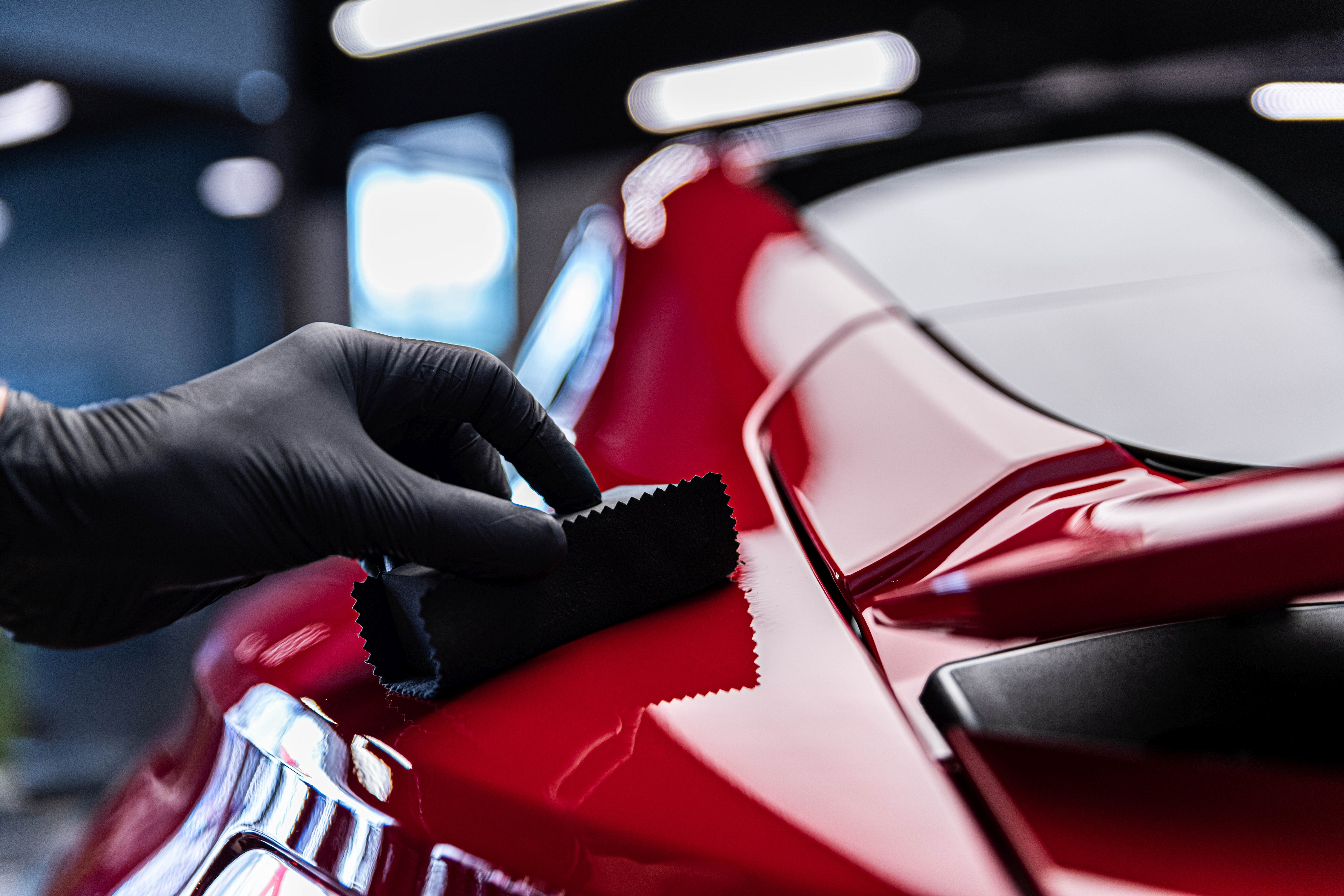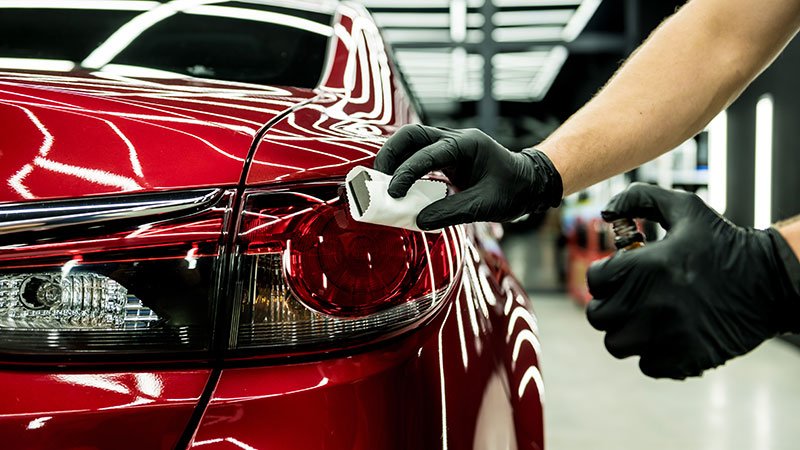Find specialized auto detailing to keep your car looking flawless.
Find specialized auto detailing to keep your car looking flawless.
Blog Article
A Comprehensive Overview to the Kinds Of Ceramic Coating on the Market
Ceramic layers have emerged as a critical service throughout different sectors due to their special residential properties and applications. As we explore the distinct qualities and applications of these finishes, the implications for performance and durability come to be increasingly evident, raising inquiries concerning which type may best suit your demands.
Recognizing Ceramic Coatings
Ceramic finishes are advanced protective remedies that have gained appeal in different markets, specifically in auto and aerospace applications. These coatings consist of a liquid polymer that, when healed, develops a sturdy, hydrophobic layer on the surface of the substratum. This layer supplies improved resistance to ecological impurities, UV radiation, and chemical direct exposure, thereby prolonging the life and aesthetic allure of the underlying product.
The basic element of ceramic finishes is silica, which adds to their hardness and toughness. The application process commonly involves surface preparation, application of the coating, and curing, which can be accomplished via warm or UV light. Once healed, ceramic layers exhibit remarkable bonding homes, allowing them to stick strongly to a range of surface areas, including metals, plastics, and glass.
Along with their protective functions, ceramic coatings likewise supply simplicity of upkeep. Their hydrophobic nature lowers the adherence of dust and gunk, making cleaning simpler and less constant. On the whole, the fostering of ceramic finishings stands for a significant advancement in surface defense modern technology, giving both useful and visual advantages throughout several markets.
Kinds of Ceramic Coatings
Numerous sorts of ceramic layers are available, each created to fulfill specific efficiency demands and applications - Car Detailing. The most usual types consist of:
Silica-based Coatings: These coverings primarily contain silicon dioxide and are recognized for their sturdiness and chemical resistance. They are widely used in automotive and industrial applications.
Titanium Dioxide Coatings: Distinguished for their photocatalytic buildings, titanium dioxide layers are commonly used in settings where self-cleaning and antifungal properties are desirable, such as in building products and automobile surfaces.
Zirconia Coatings: Defined by their high-temperature stability and thermal resistance, zirconia layers are utilized in applications such as generator engines and high-performance automobile parts.
Alumina Coatings: Displaying superb firmness and thermal stability, alumina coverings are often utilized in wear-resistant applications, consisting of reducing devices and commercial machinery. - Auto Detailing
Crossbreed Coatings: Incorporating the buildings of various products, hybrid finishes provide improved efficiency attributes, making them ideal for special and demanding applications.
Each kind of ceramic covering offers distinct functions, permitting individuals to pick the most ideal solution based upon certain ecological problems and performance demands.
Advantages of Ceramic Coatings
Coatings play an essential function in improving the efficiency and durability of surfaces across various markets. Ceramic coverings, specifically, offer various advantages that make them significantly prominent among producers and consumers alike. Among the key benefits is their exceptional longevity. These coatings are resistant to scratches, chemicals, and UV rays, ensuring that the underlying surface area stays protected in time.
In addition to longevity, ceramic coverings offer exceptional hydrophobic homes, permitting very easy cleaning and maintenance. This water-repellent nature lessens the adherence of dirt, grime, and various other pollutants, which can prolong the visual appeal and performance of the surface. Ceramic layers can considerably improve thermal resistance, making them suitable for applications that withstand high temperature levels.

Application Process
When applying ceramic coatings, a thorough approach is vital to accomplish ideal results. The application process usually starts with extensive surface preparation. This includes cleaning, sanitizing, and polishing the surface to remove all contaminations, consisting of dust, grease, and prior waxes or sealers. A tidy surface makes sure proper bond of the finishing.
Once the surface area is prepped, the following action is to use the ceramic finishing. This can be done using an applicator pad or a microfiber towel, making certain also insurance coverage. It is critical to work in little areas to preserve control and prevent early healing. The finishing must be used in slim layers, as thicker applications can lead to unequal surfaces.
After application, the layer requires a details healing time, usually ranging from a couple of hours to a full day, depending on the item. During this time around, it is essential to stay clear of exposure to dampness or impurities. Ultimately, a mild buffing may be necessary after healing to improve the gloss and eliminate any kind of high spots. Complying with these actions carefully will make the most of the efficiency and longevity of the ceramic layer, giving a long lasting protective layer for the surface area.
Maintenance and Longevity
To make certain the longevity and effectiveness of a ceramic layer, routine maintenance is necessary. Ceramic layers, recognized for their toughness and protective high qualities, need certain treatment routines to optimize their life expectancy and efficiency. The official source first step in maintenance entails regular cleaning with pH-neutral soap, preventing extreme chemicals that can break down the coating. It is recommended to clean the vehicle frequently, ideally every 2 weeks, to avoid the accumulation of impurities that might jeopardize the covering's integrity.
Along with normal washing, periodic examinations are vital. Try to find indications of wear or damage, such as hydrophobic residential or commercial properties lessening or surface blemishes. If essential, a light polish might be related to revitalize the covering without stripping it away.
Additionally, the application of a booster spray can enhance the finish's hydrophobic results and restore its gloss. This is especially helpful for finishings that have actually been in usage his response for a prolonged duration. Inevitably, by sticking to these maintenance practices, one can considerably extend the life of a ceramic coating, making certain that it remains to provide ideal protection against ecological aspects and maintain the visual appeal of the automobile.
Conclusion

Report this page